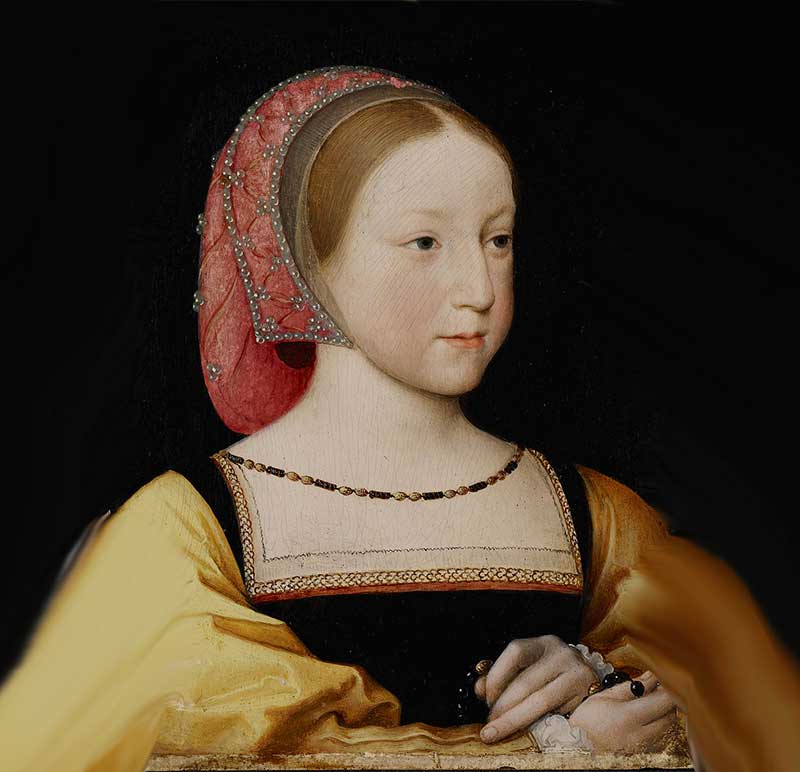
The massive Château de Brissac, located in the Loir Valley, in the commune of Brissac-Quincé area in France, and originally built as a castle by the Counts of Anjou in the 11th century, is said to be haunted by the ghost of Charlotte de Brézé, a beautiful young woman brutally murdered by her husband in the 15th-century, and her mutilated corpse is reported to be a horrifying sight.
After the victory over the English in the 11th century, King Philip II of France gifted the enormous Château de Brissac to Guillaume des Roches, a French knight and crusader for his support in the war. Much later, during the 15th-century, the château was rebuilt resembling a fort by Pierre de Brézé, one of the prominent ministers of Charles VII of France. However, the property was later acquired by René de Cossé during the reign of King Francis I, who was also named as the governor of Anjou and Maine by the king. During the French Wars of Religion, between Catholics and Huguenots, château was possessed by the Protestant leader, Henry of Navarre, in 1589. But after becoming the king of France as Henry IV in 1572, he gifted it to Charles II of Cossé as a reward for his support in the war, and also awarded him the title of Duke of Brissac. As the structure was severely damaged during the wars, the Duke of Brissac pulled it down, and rebuilt it in a decadent Renaissance style, with its façade reflecting the influences of the 17th century's Baroque architecture. Considered one of the tallest castles in France, the seven-storey Château de Brissac, resembling an enormous fairy tale castle, dominated the region and added considerable prestige to the Duke family.

During the Chaotic days of the French Revolution, the château was ransacked and badly damaged. Eventually, the descendants of Charles lost its possession, and it remained abandoned for the next half a century. However, during the middle of the 19th-century, the château again came under the control of the Duke of Brissac, when an extensive renovation programme was undertaken and continued by the subsequent Dukes. Listed as a Monument Historique by the French Ministry of Culture, the massive château attracts thousands of visitors every year.
However, like many other ancient castles around the world, the Château de Brissac is also said to be haunted by a ghost, the ghost of a beautiful young woman, la Dame Verte or the Green Lady, the resident ghost of the château. She was Charlotte de Brézé, the illegitimate daughter of King Charles VII and his mistress, Agnes Sorel, brutally murdered by her husband in the castle during the 15th-century.

According to Kathleen Wellman, a royal historian, despite the history of her birth, Charlotte was loved both by the king and the queen, Marie of Anjou, and she was the beloved half-sister of Louis XI, son of King Charles VII. When the girl grew up to become a beautiful young woman, King Charles VII arranged the marriage of his beloved illegitimate daughter to Jacques de Brézé.
Jacques was the grand seneschal of Normandy and the son of Pierre de Brézé, one of his favorite chief ministers. Although the marriage was arranged by the king on the pretext of his loyal service, the match was regarded by many as politically motivated and expedient for all concerned.


Unfortunately, the arranged marriage was a miserable failure as the two concerned individuals had quite different traits of character. While Charlotte was inclined to sophisticated tastes and used to love the life at court, Jacques enjoyed outdoor activities, spent long days in the countryside, enjoyed the excitement of hunting, and tending to his estates. He had the least interest and little time for the refined, courtly pleasure that Charlotte was accustomed to. Charlotte hated the uncomfortable countryside and disliked the boorish character of her husband. She felt lonely, and her heart was missing the undivided attention and love of a man. Soon she became attracted and then fell in love with Pierre de Lavergne, a handsome and cultivated huntsman in the band of her husband. As his careful attention and tender affection deluged the unhappy Charlotte, they became involved in an extramarital passionate love affair. But the affair did not last long, and on 31 May 1477, after a long day of hunting, Jacques returned to his castle to find his wife in bed with her lover. In a fit of rage, he murdered the adulterous couple on the spot with one hundred blows to each of them with his sword or his hunting axe. However, according to another version, Jacques killed Pierre immediately and strangled Charlotte later in the Chapel Tower at Brissac.

What happened to the fate of Jacques de Brézé after he brutally killed his wife, and how Louis XI, the half-brother of Charlotte avenged the murder of his beloved sister, is another story. But the unhappy spirit of Charlotte de Brézé reportedly remained within the walls of the Château de Brissac, wailing, moaning, and lamenting the death of her lover and cursing her murderous husband. She is often seen floating through the castle, especially in the tower room of the chapel, wearing a green dress, the dress in which she was murdered, and named the Green Lady, la Dame Verte.